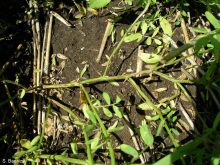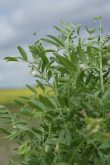Pulse Canada is getting $11 million in federal funds to take crop production to the next level.
The funds from Agriculture Canada were announced earlier this month at the University of Manitoba by Winnipeg South-Centre MP Ben Carr on behalf of federal Agriculture Minister Lawrence MacAulay.
“This is going to be an extremely powerful catalyst for the growth of this industry, which has such an important presence here in the prairie region of Canada,” said Carr.
The funding is tied to Agriculture Canada’s AgriScience program, an initiative under the Sustainable Canadian Agricultural Partnership. It is divided into two sub-categories. Program funding supports individual products while clusters funding, which includes the Pulse Canada announcement, looks to “mobilize industry, government and academia through partnerships, and address priority national themes and horizontal issues.”
Read Also

Bunge’s crop mix is changing
Bunge has predominantly been a soybean processing firm, but that’s about to change after the merger with Viterra with softseed processing and grain merchandising gaining ground.
A similar announcement was made under the same program for the canola sector in fall 2023.
For the pulse cluster, funds are expected to bring industry and researchers together on projects that will boost farm production and reduce the environmental footprint.
“They’ll do this through things such as fertility strategies that maximize nitrogen fixation, new higher protein varieties that are more productive and profitable for farmers as well as building disease resistance and resilience against climate change,” said Carr.
“All of this will help to increase profits for farmers and help Canada reach our 2030 and 2050 climate targets.”
Much of that kind of research is taking place at the University of Manitoba. Professor James House, who is also Manitoba’s strategic research chair in sustainable protein, said the funding will help maintain pulse research efforts at the university.
“The funds announced today allow us to continue our collaboration with Dr. Tom Warkentin, a pulse breeder at the University of Saskatchewan, to understand how genetic, agronomic and environmental factors influence both the content and quality of protein found in yellow peas,” said House.
Pulse Canada chair Kevin Auch said announcements like this help maintain Canada’s role as a world leader in sustainable pulse production and export.
“These investments in research from the Government of Canada, matched by our sector, will help enhance our resiliency to meet the growing global demand for sustainably grown, high quality pulses and ingredients while making a positive impact on our environment and economy,” said Auch.
Pulse Canada will add $10 million to the cluster’s pot, bringing total backing to $21 million into 2028.
In a news release accompanying the announcement, MacAulay said the investment would “bring together the top experts in pulse growing and research from across the Prairies to improve the competitiveness and sustainability of the sector for generations to come.”
John Preune, a St. Andrews-area farmer who sits on the board of both the Manitoba Pulse and Soybean Growers and Pulse Canada, said the new funding is crucial for the industry.
“The investments will help mitigate the challenges presented by climate change by enhancing drought tolerance in crops, tackling diseases like root rot, and increasing the uptake of pulses across Canada to help sequester carbon,” he said, adding the joint industry-government contributions will send an important message to Canadian and global markets.
“Today’s customers are increasingly interested in where their food comes from and who’s producing it and how it’s produced,” he said. “And Canada’s pulse industry has an excellent story to tell. Canadian pulses are among the world’s most sustainable protein sources of the world.”
Preune pointed to recent data that suggests the nitrogen-fixing traits of pulses combined with modern agriculture practices could allow Canada’s pulse industry to eliminate 3.6 million tonnes of atmospheric carbon dioxide annually.
“That’s equivalent to taking 1.1 million cars off the road for an entire year,” said Preune. “There’s no doubt that, through collaboration, we can go further, faster and together ensure the long-term viability and economic and environmental success of Canada’s pulse sector.”
















